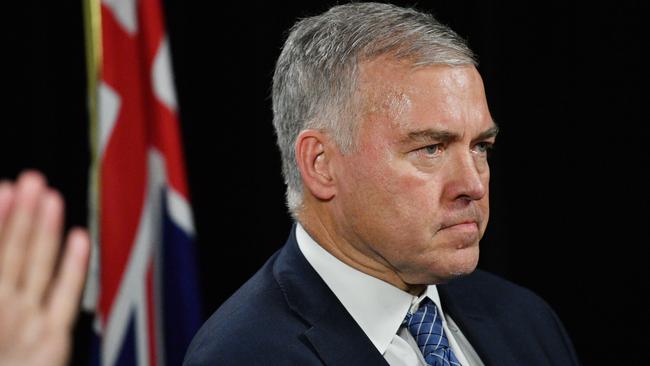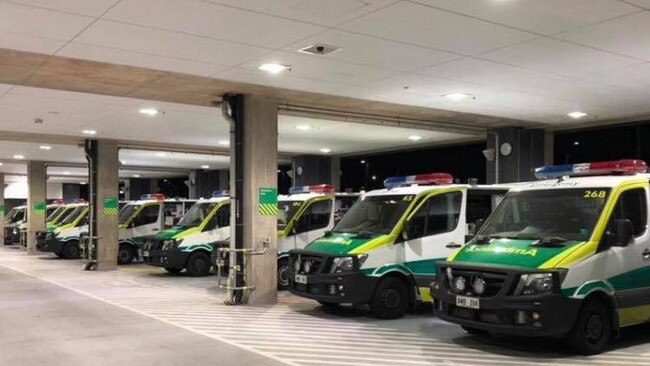Ambulance ramping dropped 20pc in 2020 but surges persist
Ambulance ramping dropped 20 per cent last year but the ambo union says the practice is now regarded as “business as usual”
SA News
Don't miss out on the headlines from SA News. Followed categories will be added to My News.
Ambulance ramping fell by 20 per cent last year and 2020 finished on a downward trend despite several high profile “surges” in demand, government figures show.
Time lost as patients waited in ambulances stuck in car parks to be transferred into emergency departments at major metropolitan hospitals last year fell to 14,529 hours last year compared to 18,074 the previous year.
Most hospitals recorded a fall in lost hours including the Royal Adelaide Hospital where it fell by 30 per cent, but the Lyell McEwin Hospital and Women’s and Children’s Hospital both had increases.
The pandemic saw a sudden drop in demand in April-May but pressure on EDs had returned to pre-COVID levels by June — including increased mental health and alcohol presentations linked to the pandemic’s effects.

Health and Wellbeing Minister Stephen Wade said social distancing, infection control measures and the need for isolation of some patients has reduced the capacity of metropolitan EDs.
“Despite this, we have seen steady reductions in the time patients spend on the ramp over the last two months,” he said.
“In December, there were a total of 1361 hours lost due to transfer of care delays.
“That’s down 15 per cent on November (1608 hours lost) and down 19 per cent on October (1680 hours lost).
“There has been a reduction of 10 per cent from December 2019 (1511 hours lost), continuing the downward trend year on year.”
Mr Wade welcomed the data as encouraging especially in light of some of the health workforce being redeployed to the pandemic response.
“The reduction in waiting times will ease the pressures on our ambulance fleet and improve the patient experience at a very stressful time,” he said.
Efforts underway to further reduce ramping include the $58m expansion and refurbishment of the Lyell McEwin ED and new eight-bed Mental Health Short Stay Unit, and the $8.5m upgrade to the Flinders Medical Centre ED where capacity will increase by up to 30 treatment spaces.

Mr Wade also noted the new $14m Urgent Mental Health Care Centre to be established in the CBD will ease demand on EDs by providing an alternative option for people experiencing urgent mental health needs.
However, the Ambulance Employees Association says ramping is now being treated as “business as usual”.
Senior industrial officer Rob Leaney called for more resources for ambulances and hospital EDs, noting there had been little flu this year but still regular ramping.
“There are peaks and troughs but even with no flu we have regular ramping and it is treated as business as usual which is very concerning,” he said.
“It seems to be a never ending circle of misery and while we welcome some government initiatives they generally are of small benefit — we don’t see the cycle changing.
“It is hard on patients and also on our members who end up not getting breaks.”
Hours lost are the time an ambulance crews waits for a patient handover, less the first 30 minutes on arrival which are not included.



